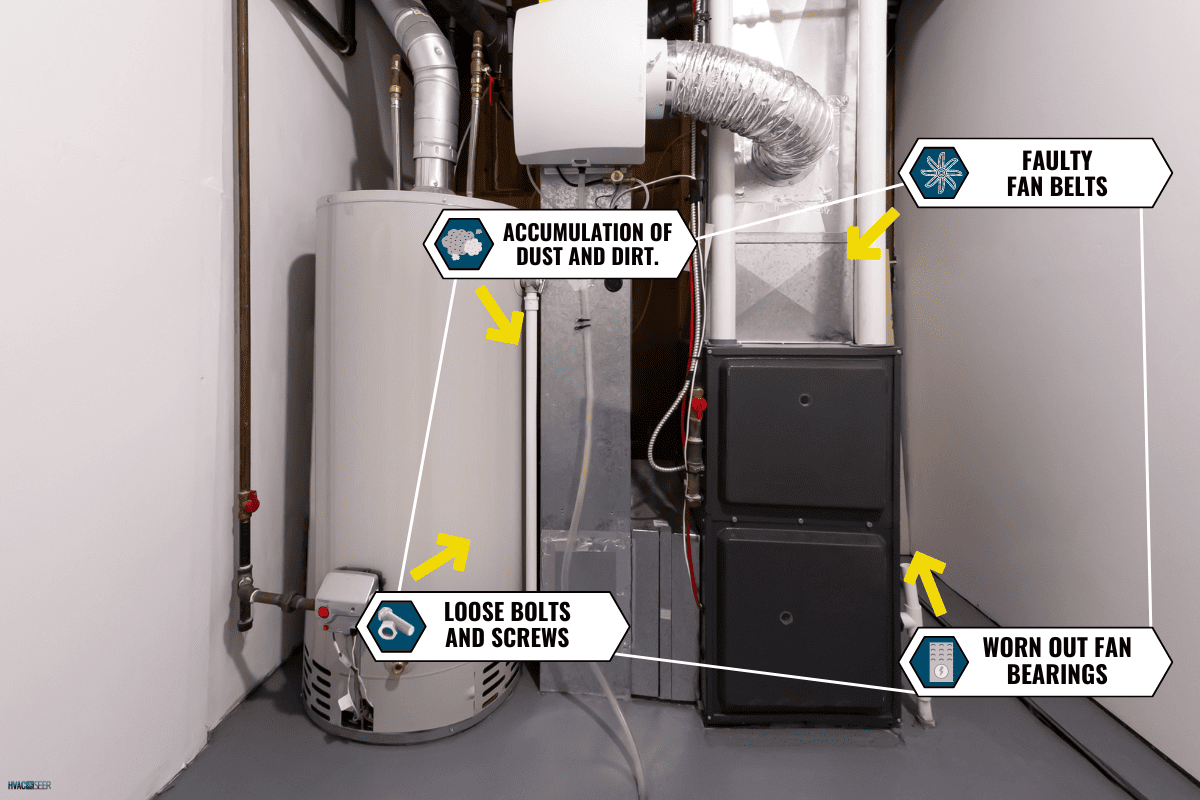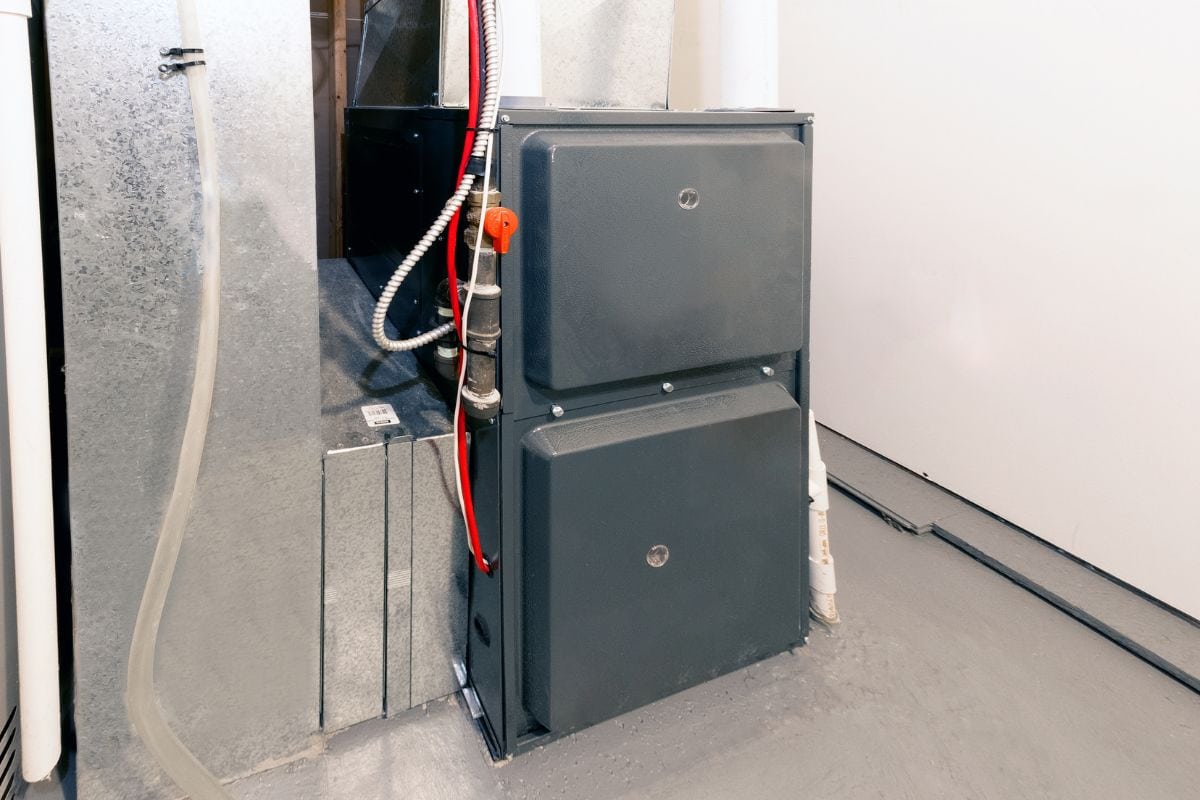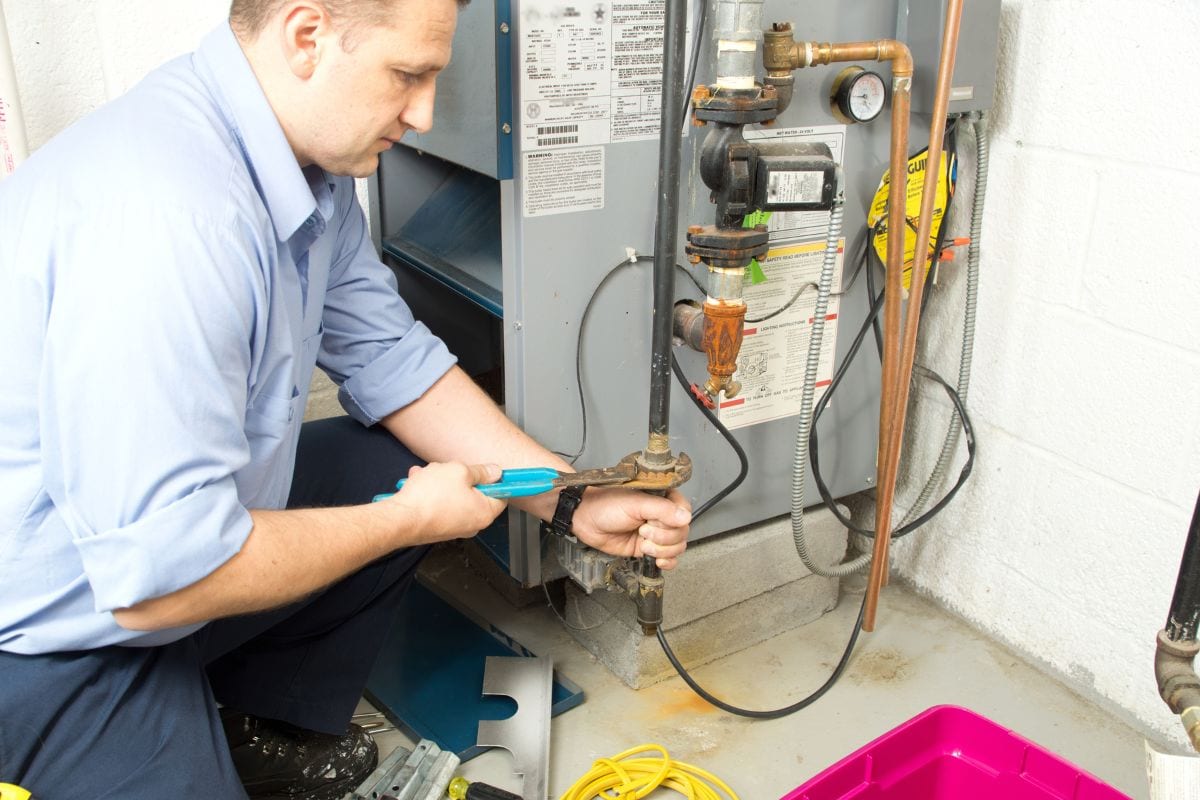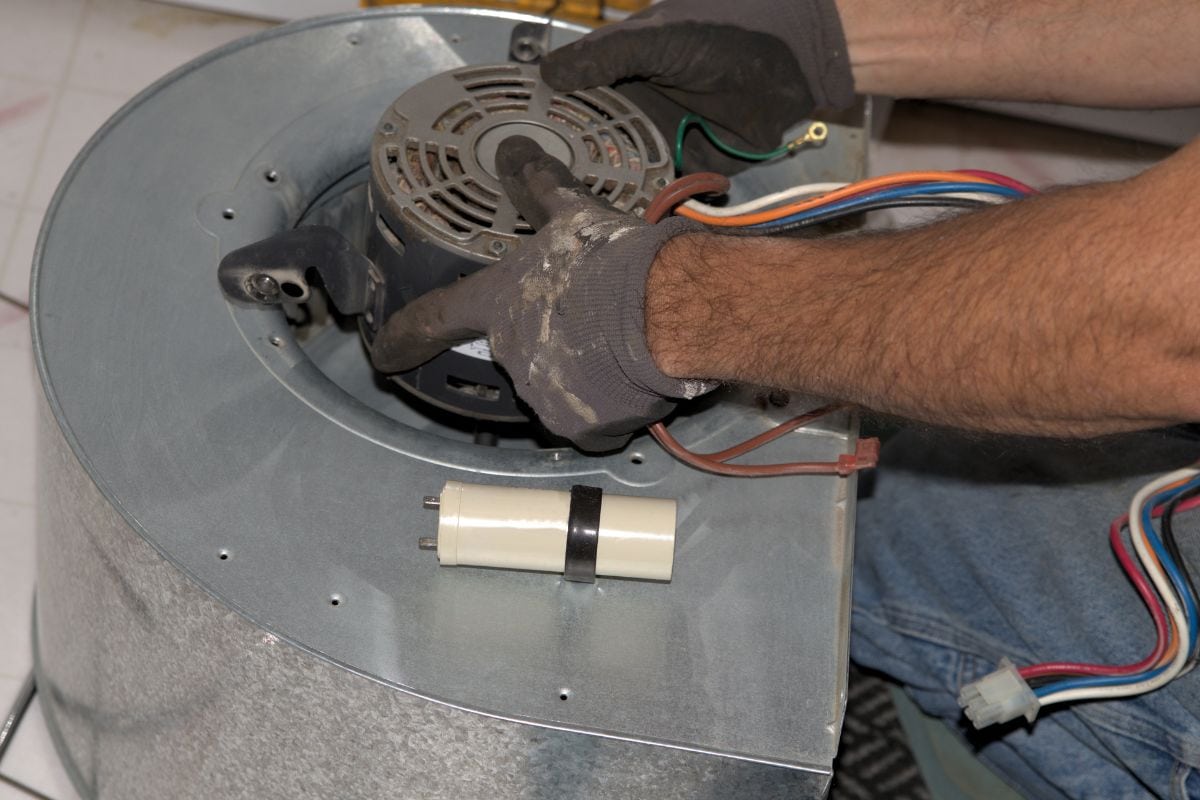If you've ever heard your furnace chirping or making noises similar to a cricket, it may be a sign of something wrong. But don't panic—it's also possible that it's not an issue you need to worry about. Luckily, we researched this topic to help you understand why your furnace is making cricket noises.
When chirping noises like that of crickets are coming from your furnace, then it's highly likely that the following reasons are the cause of it:
- Accumulation Of Dust And Dirt
- Loose Bolts And Screws
- Faulty Fan Belts
- Worn-Out Fan Bearings
In this article, we will discuss these causes further and provide a solution for dealing with each one. You will also learn how to maintain your furnace properly and how much it costs to repair. So continue reading this article to find out more.

Why Does A Furnace Make Cricket Noises?
Cricket noises or chirping sounds usually happen when a furnace idles for too long. Firing the furnace up a couple of times will make the noise disappear.

However, it's always best to double-check the furnace's inner workings to prevent future complications. Here are some of the more common causes that you need to be aware of:
Accumulation Of Dust And Dirt
Cricket noises from your furnace are normal, especially at the start of the winter. It's a sign that your furnace is shaking off the accumulated dust and dirt from months of inactivity.
Letting it run for a few days will help clear the noise. However, if it persists, it's best to call a professional and have them look at your furnace.
Loose Bolts And Screws

If the chirping persists even after letting the furnace run for a couple of days, there may be loose screws and bolts inside of it. Depending on which ones are loose, the sound might vary.
Luckily, all you need to do is fasten those loose parts. Make sure to turn off the furnace when doing this to avoid any unwanted accidents. Afterward, gently shake each part inside the furnace where there are screws and bolts.
Do this until you find any loose parts and tighten each one. This will help eliminate the cricket noises.
Faulty Fan Belts
If you own an old furnace, then it's highly likely that the cause of the cricket noises is more than just dust and loose screws. It could signify that the fan belts have endured too much wear and tear over the years.
Turn off the furnace and check the fan belts if this is the case. You can easily find them in all the motors. Afterward, check for any signs of wear and tear like punctures, rips, thinning, and anything similar.
After confirming that the fan belts have indeed suffered significant wear and tear over the years, you should replace them with a new ones. Make sure to check the size and thickness of the fan belt your furnace requires before replacement.
Old Fan Bearings

In some cases, it's not the fan belts that are worn out but the fan bearings. Worn-out fan bearings are an even more troublesome issue than worn-out fan belts. That's because they could severely damage the internal workings of the motor if left alone.
You should turn the furnace off before checking the fan bearings. You can find them at each motor assembly unit. Then, inspect them for any cracks or chips on the surface.
As with the fan belts, your only option is to replace them. You can hire a professional to help you in this process.
How To Maintain A Furnace
Furnaces don't last a lifetime; their average lifespan is nearly two decades. However, without proper maintenance, it could be shorter than that. That's why in this section, you will learn some tips and tricks on how to make your furnace stand the test of time:
Clean And Replace The Filter
One of the best and easiest ways to maintain your furnace is by regularly cleaning and replacing its filter. By doing this, you're ensuring that the furnace is always working optimally.
A clogged filter will result in inefficient airflow due to accumulated dust and dirt. Not only that, but the filter could also become a breeding ground for bacteria and other microbes if left unattended.
Cleaning and replacing the filter every one to three months is best. If you're using a higher-quality filter, then the duration is much longer. Consult the packaging for more instructions if that's the case.
While we're on the topic of filters, consider changing your furnace filter for a higher-quality one. Although these filters can be a tad bit more expensive, they will last longer and help filter out allergens and bacteria from the air.
This helps provide cleaner air for you and your family members and is especially good for those suffering from asthma and other respiratory illnesses.
Check out these furnace filters on Amazon.
Regularly Check The Blower Motor
The blower motor is an integral part of the furnace and one of the most expensive parts to replace.
Regularly checking it before and after every use of the furnace will help you maintain it in the long run and allow you to resolve any issues that may arise unexpectedly.
After all, the blower motor is responsible for pushing the warm air out of the furnace and into your home's vents. Without it, your furnace is a sitting pile of hot metal that can't keep your home warm and cozy.
Reduce Heat Loss At Home
One way to help reduce your furnace's burden at home is by removing spaces that contribute greatly to heat loss. Areas where cold air seeps through easily and warm air dissipates quickly will put too much stress on your furnace.
To avoid this, you will require the help of a heating professional. They will help you identify which areas of your home are contributing to heat loss.
From there, you will have to discuss with a contractor how to prevent warm air from escaping while keeping cold air out. This could lead to you weatherstripping the windows and doors and sealing them up to prevent further heat loss.
Adding insulation to the vents and ductwork is another way to reduce heat loss so that your furnace can keep working optimally and efficiently without too much stress.
Free Up Air Vents And Ductworks
When using the furnace, ensure that the air vents are free from obstructions. This will allow the furnace to distribute warm air equally and efficiently throughout your home.
Accumulating dust, dirt, pet hair, and other small objects in the vents and ductwork will also create a blockage, preventing warm air from flowing freely. Not only that, but it also creates a very unhygienic environment for you and your family.
If anything blocks the pathway of the furnace, it can cause the furnace to work inefficiently. As a result, the furnace will have to work harder and accumulate wear and tear.
How Much Does It Cost To Repair A Furnace?
It depends on the kind of furnace you own. On average, repairing an electric furnace costs between $100 and $300. Gas and oil furnaces can set you back more than three times that amount at between $300 and $1,200.
This doesn't cover the costs of when certain parts need a replacement. Those will cost you even more, depending on which part needs changing.
For example, on average, a furnace blower motor usually costs between $150 to $300 to repair. But a replacement part will cost you around $2,000. Even a simple gas valve, which costs around $75 to repair, will set you back by $200 if it needs replacing.
Don't wait to do a repair until the part needs a replacement. You might consider investing in a yearly furnace maintenance service. It will only cost you around $300, much cheaper than risking a furnace breakdown and buying a replacement part.
How Much Does It Cost To Replace A Furnace?

If the amount it takes to repair and replace certain parts far exceeds what you're comfortable with, it's likely time for you to get a new furnace, especially if your current one shows wear and tear due to old age.
So if you're in the market for a new furnace, it will cost you between $3,000 and $8,000. This covers labor and permit fees, not just the furnace itself.
Of course, the price will vary depending on the size and model you want. But you'll be getting one that's more advanced than your previous model.
Check out this furnace on Amazon.
To Wrap Up
If you fire up the furnace after not using it for a while, it could start chirping like a cricket. Normally, this means that it has accumulated too much dust and dirt.
However, the noise could also indicate that something is wrong inside the furnace, and it may require a more thorough inspection.
Are you looking for other articles similar to this one? Then check out the posts below:


